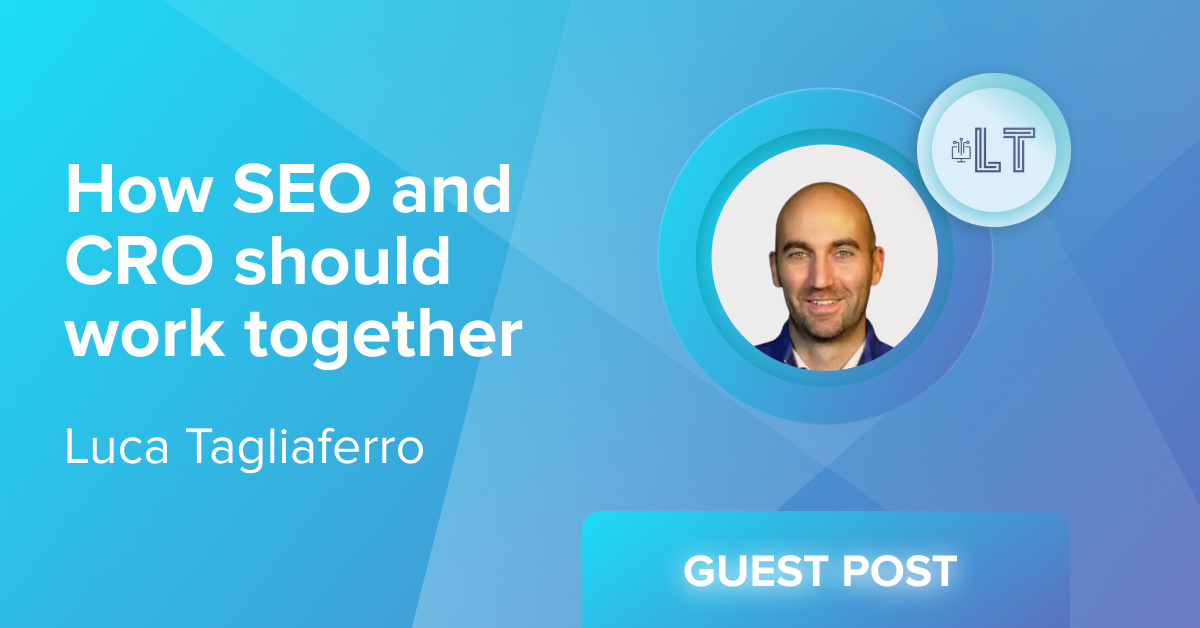
SEOs work very hard to gain the first position on Google search results.
It’s a lot of work, takes a lot of effort, the use of good SEO tools, substantial experience, and oftentimes financial investment to rank high, especially for competitive search terms.
But traffic alone doesn’t always lead to sales or leads.
Not if the general users’ experience is not optimised properly.
The mistake I have seen in my SEO experience is that too many marketers are obsessed with generating traffic to the website. This is their first metric for organic performance. While this is actually true, traffic for the sake of traffic only is a vanity metric.
In addition to traffic, a successful website requires an excellent user experience, a clear customer funnel and high conversion rates.
So in this article, we’ll go through 5 strategies you can use to make SEO and CRO work together successfully.
Table of Contents
What is CRO (and why is it important)?
So if SEO works to bring traffic to the website, CRO (Conversion Rate Optimisation) should work to convert it. While it may seem that CRO and SEO are two different things, they are actually working towards the same goal: generate more customers and higher ROI.
Here is the general definition of Conversion rate Optimisation: a planned process of improving the percentage of visitors who perform the desired action — such as subscribing to a mailing list, filling out a personal information form, or buying a product.
For example, if 20,000 visitors arrive on your landing page and 1,000 of them complete the desired action, your conversion rate would be 5%.
By working together with SEOs, Conversion Rate experts can leverage significant traffic potential.
Potential issues when CRO and SEO don’t work together
If you think of SEO and CRO as separate entities without an appropriate process for working together and generating higher ROI, chances are you are building a recipe for disaster.
Here’s what happens when you focus too much on CRO: it can ultimately harm your SEO.
This is because CRO teams overlap their areas of expertise with SEO teams. Here is an example of a typical situation:
- As a result of their AB tests, CRO teams change copy on your landing page and get rid of some copy that is essential for SEO success.
- CRO teams removed some keywords or semantically related words that SEO needs to rank higher.
- This could lead to lower rankings and higher conversion rates.
On the other hand, if you focus too much on SEO, your conversion rate could take a dip. Organic traffic specifically generated from search engines does not always mean more conversions.
Let’s take this example to explain the concept better:
- On the pricing page, SEOs replace the social proof, customer testimonials, and reviews with optimized copy that is needed to increase rankings.
- This change will result in higher ranking, more traffic, and poor conversion performance.
- This means the website would have to put pressure to their search activities to compensate for the loss of conversions.
This is a typical situation where SEOs would do their job without taking CRO into account.
Most SEOs believe their goal is to generate high volumes of traffic, not conversions.
While this is partially true, there were significant changes to the SEO industry, such as the focus on Core Web Vitals, that made it more important to focus on UX and CRO factors as well.
Also not so recent changes, that became more important, are related to RankBrain that analyses the experience searchers have on your landing page. Specifically, it’s looking at organic click-through rates, dwell time, bounce rates, and pogo-sticking. These are all UX signals that can make a huge difference in rankings.
Let’s look at one example. Like most users, you land on Google’s first result. Unfortunately, the content is not very helpful and full of fluff. So you hit the back button and choose the second Google result. This back and forth is called “Pogo-sticking” and RankBrain pays a lot of attention to it.
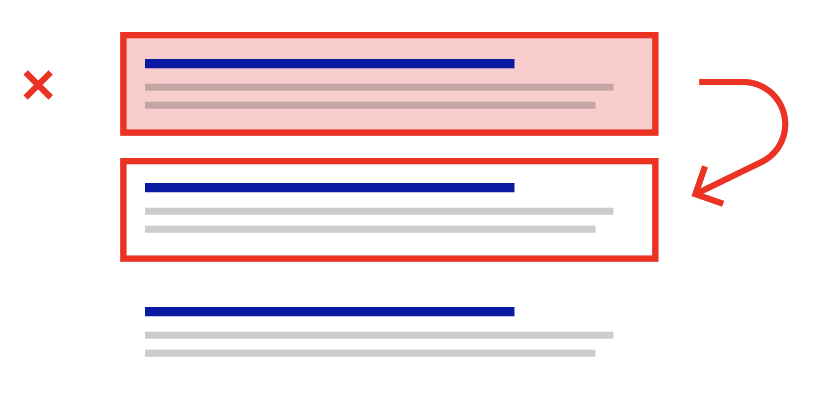
SEO developments like this have reshaped the profession to a point where SEOs need to involve UX experts, web designers, web developers, and CRO teams in order to successfully conduct SEO campaigns.
Here is how to connect rankings and conversions
As explained above, it’s no longer enough to optimise the traffic quantity and quality. To be successful, websites should also improve the quality and quantity of conversions.
By implementing these best practices, you can make sure SEO and CRO will work hand in hand.
Improve User Experience
Google has shared recommendations to assist businesses in improving their user experience. While the search engine said that user experience is not a ranking factor, the fact that user behavior is a ranking factor demonstrates that SEOs must have a strong interest in this topic.
I demonstrated in my case study how improving UX elements and engagement metrics lead to significantly more organic traffic (and more conversions).
Here are some awesome ideas on how to improve UX:
Checkout process optimisation
You might be losing out on huge rewards if you haven’t put time, money, and research into your checkout process.
If you have a high rate of cart abandonment, something is most certainly lacking.
After all, you’ve already attracted customers. They’ve placed your items in their shopping basket with the intention of purchasing them.
But then, almost out of nowhere, the momentum stops.
Why? You’re probably detering users throughout the checkout procedure.
One of the best tips we could give you is to allow customers not to create an account when they are purchasing. Even Google says an account is not necessary to buy a product online.
In fact, 24% of purchasers abandon the sale because they are asked to create an account.
Urban Outfitters is one of those eCommerce websites that uses this hack.
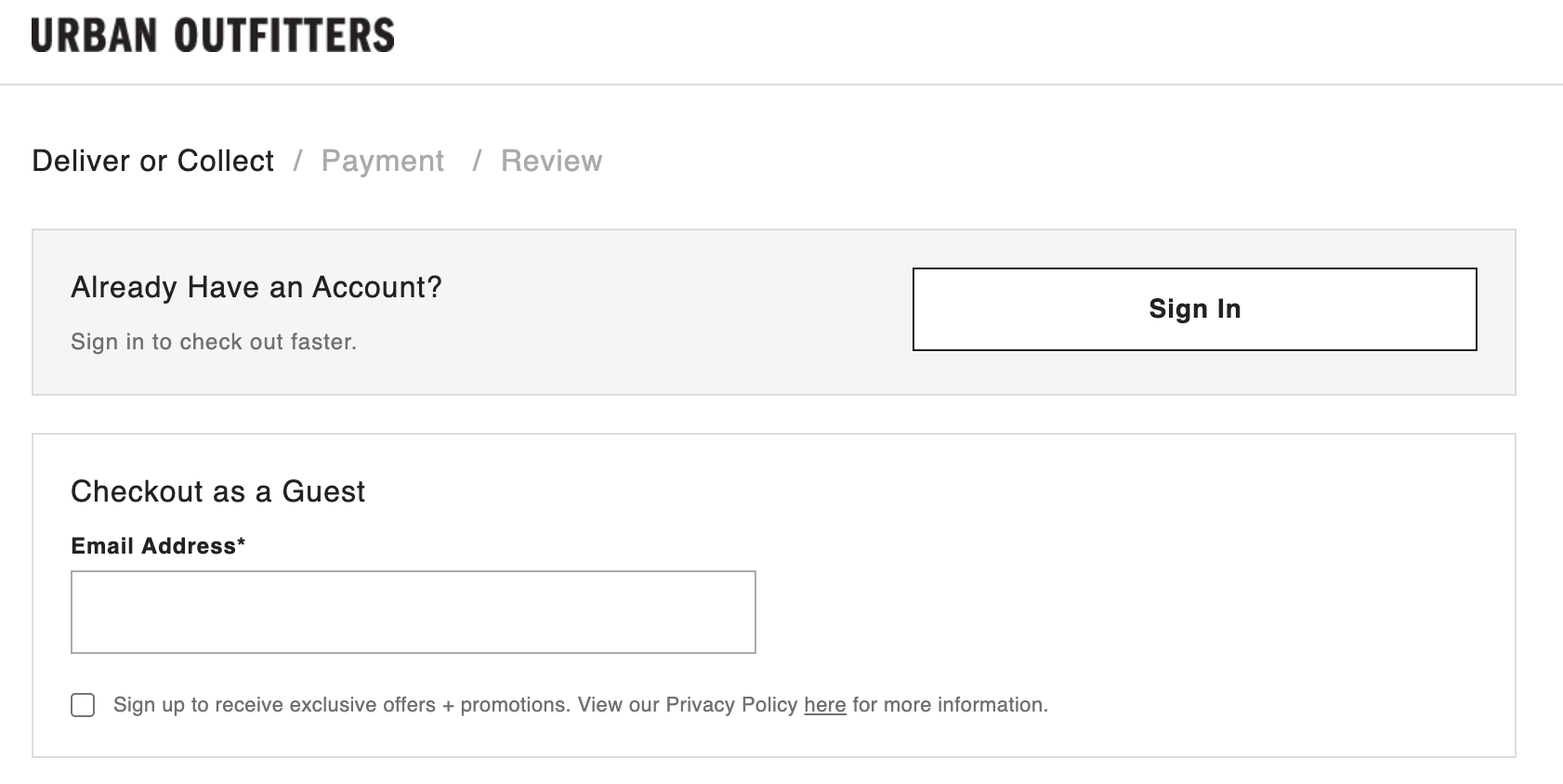
Another useful tip is eliminating friction points. They usually happen when the user is experiencing something unexpected in the checkout flow.
The funnel visualization report in Google Analytics gives an example of a friction point, even though it doesn’t give detailed information of what caused users to exit your website.
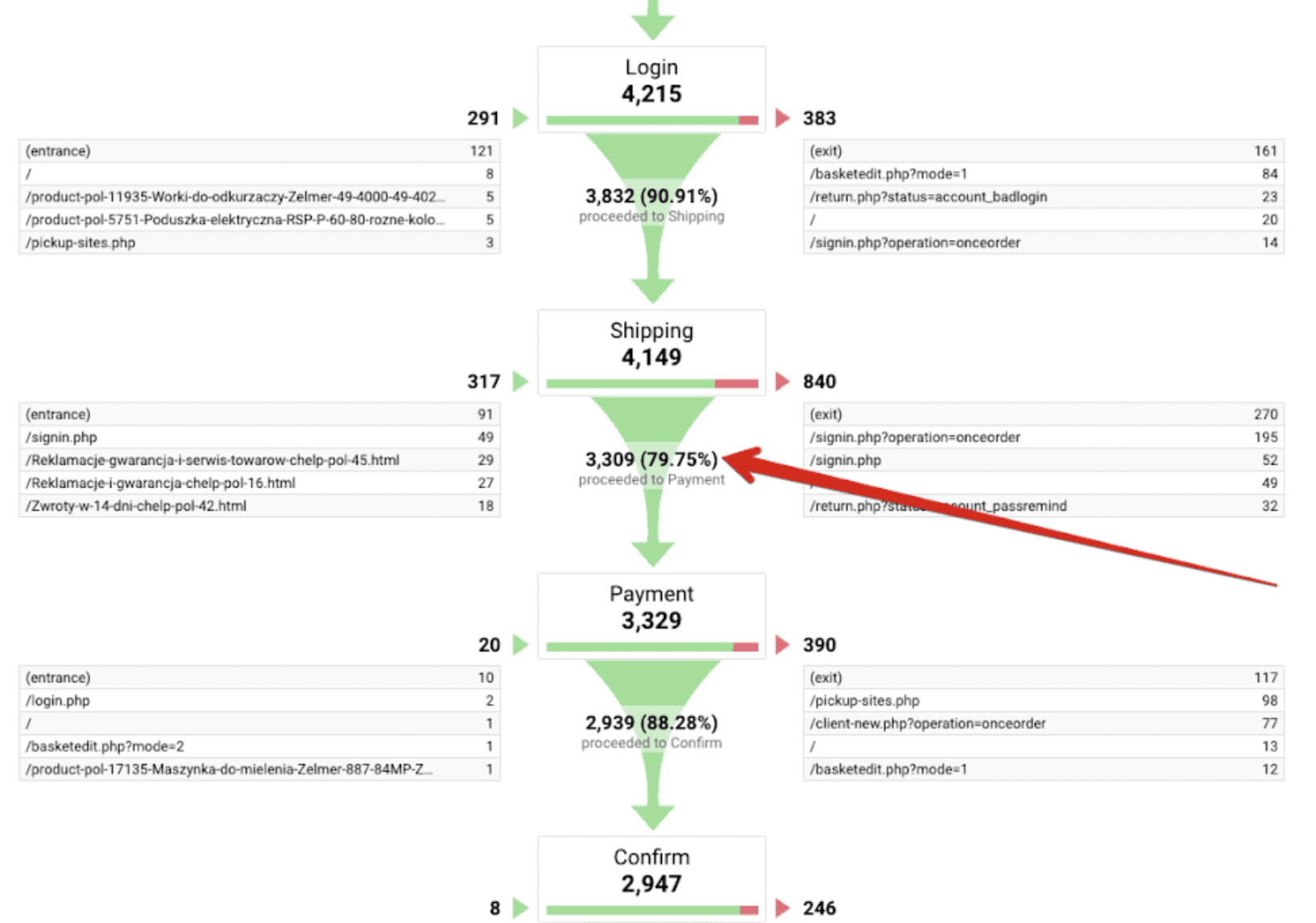
CRO teams normally use this information to determine what caused the friction point. They might also integrate the funnel visualization with heatmap tools in search for technical bugs, wrong copy, emotional behaviours, and many other factors that could create issues.
Optimise the CTA and form
Allow your visitors to discover your form without having to go through a lot of content and design. This will simply increase the likelihood of people abandoning your landing page without providing you with their contact information.
You must position your form above the fold to avoid this.
This clarifies what the customers have to click and prepares them for what they will do on the following page.
Spotify is a good example of keeping their CTA above the fold, while also motivating users to try their service.
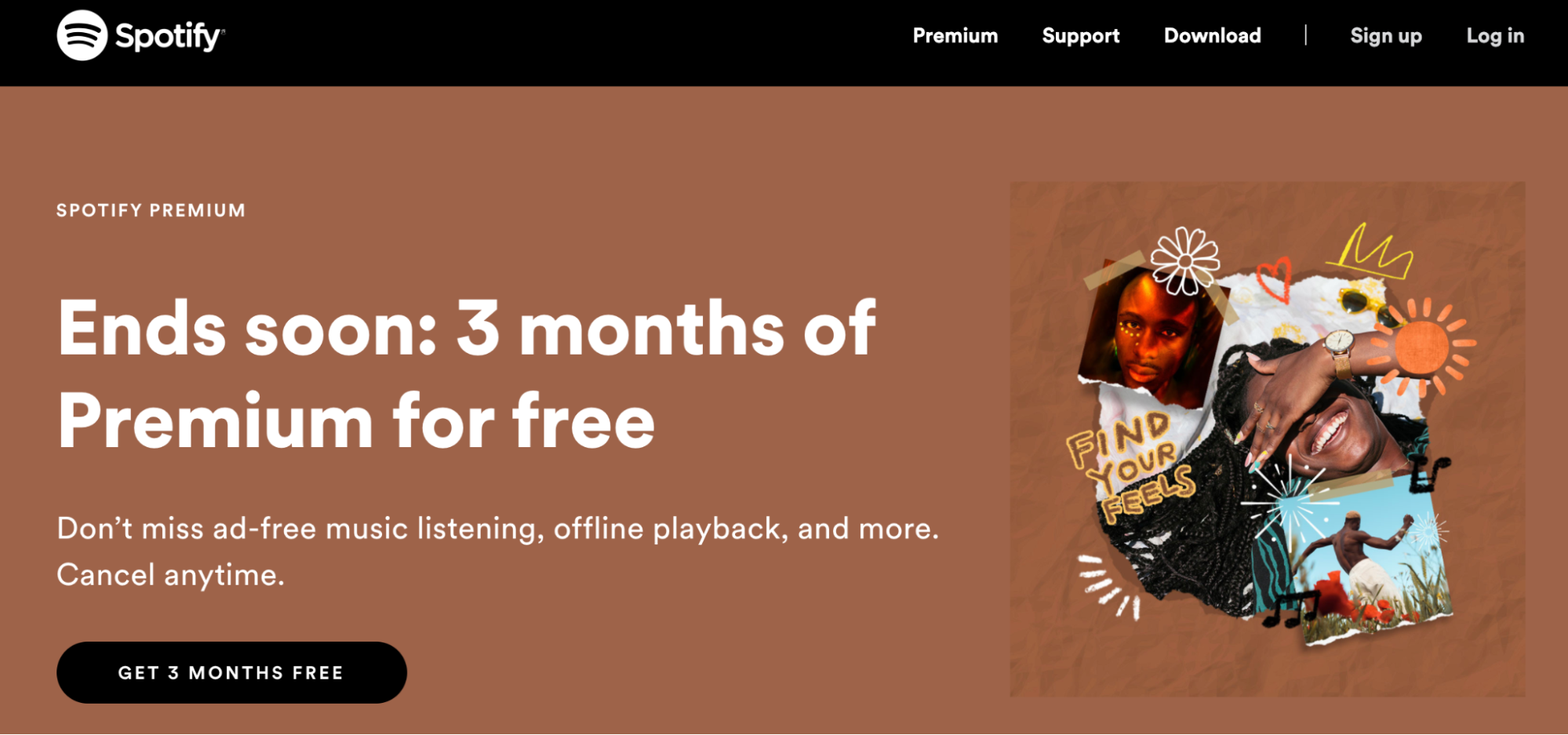
On this particular home page, Spotify achieves three goals:
- Conveys urgency with the copy “ends soon”
- Makes an irresistible offer with the word “free”
- And keeps the CTA above the fold where it’s visible to everyone without scrolling.
Improve page scroll rate
If you create a blog, your main goal is to make somebody read your content from top to bottom. Make sure your visitors, that are landing from search engines, do not jump back to search results.
Page scroll is one of the best metrics to ensure your content is engaging.
Here are a few great ideas to improve page scroll:
- Keep visible navigation options to make it easier to click on different parts of the page
- Above the fold, ask them to scroll down to discover more content
There are countless examples of websites adopting the above tips. Brave.com developed the “scroll to learn more” button to inform their visitors about content below the fold.
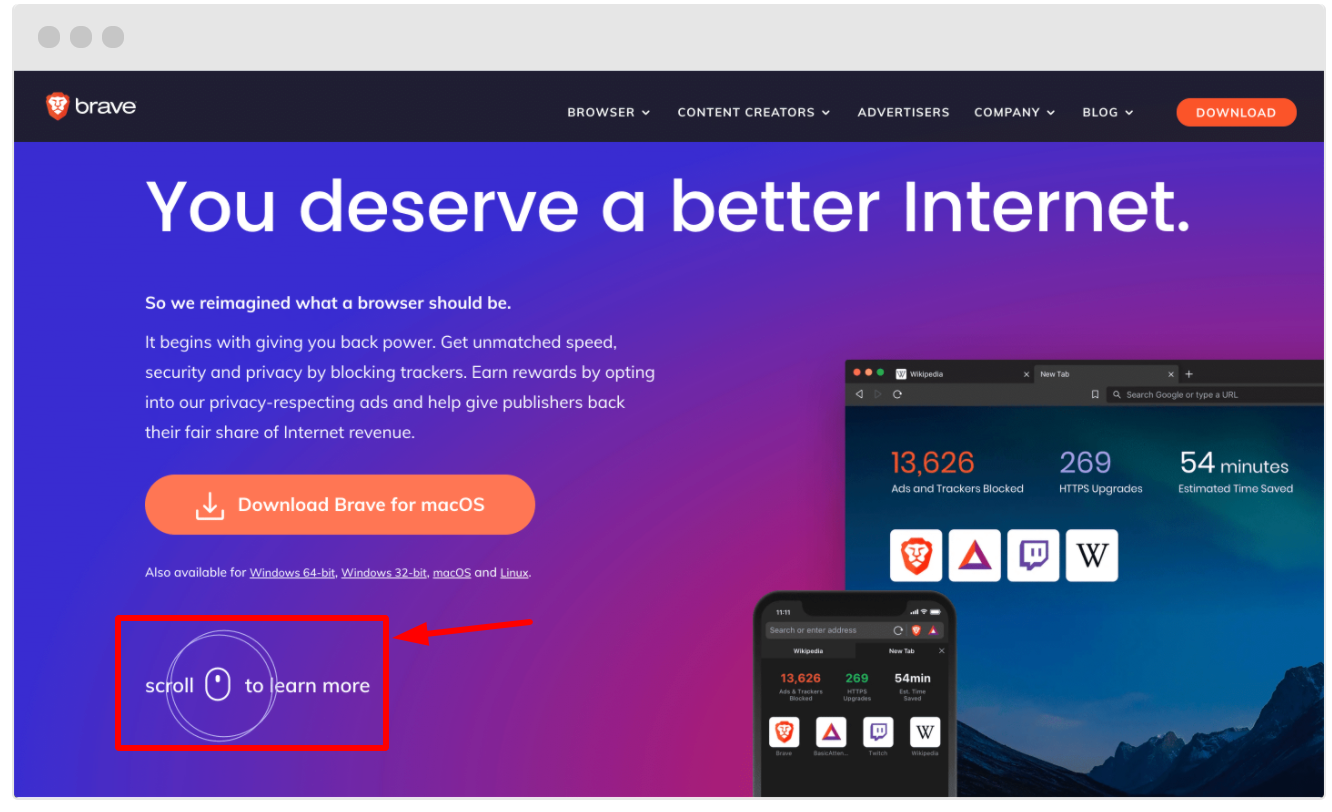
If you are wondering how page scroll can be measured and you are using Google Analytics, you might want to check the native integration in Tag Manager or follow this simple guide from Google.
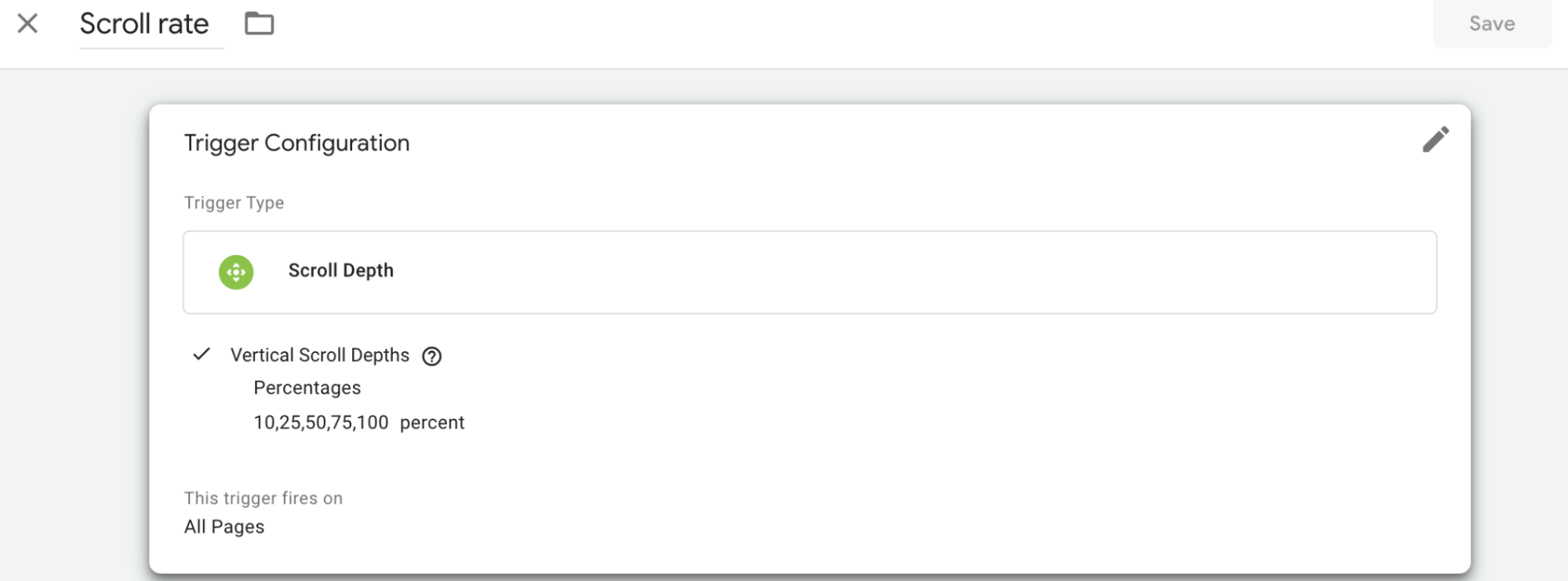
Optimise for searchers tasks accomplishment
Google uses page experience data, together with data coming from Chrome about users’ behaviour, to collect information on whether searchers are satisfied with the information on a page.
Searchers’ task accomplishment is believed to be a new ranking factor, being around for about 4 years now. So if Google wants to help people find the best result that helps them accomplish their tasks, SEOs and CROs’ job is to make this as straightforward as possible.
Pretty much every informational and transactional query – that covers more than 80% of the queries – has the goal of accomplishing a task.
Think for example about “make a pizza”, which is an expression of needs.
But underlying that is a number of different micro-goals such as:
- Make the dough
- Create the sauce
- Add fresh toppings
- Prepare the oven
- Choose your toppings
These are mini-tasks that can be split into even smaller tasks, for example, when it comes to the oven choice, what are the differences between electric and stone ovens?
In this situation, Google is going to reward the website that best helps the user accomplish its tasks.
However, such an amount of content could lead to conversion difficulties. In fact, CROs might feel that by giving too much golden information away, SEOs prevent users from converting. CROs need leads to start getting into the funnel and to accomplish this goal, they believe that too much content is not the answer, actually it’s a friction.
Essentially, it’s about finding the right balance between the amount of content SEO will publish and the gated content needed to convert those readers.
Reducing the amount of product choice can be beneficial
Marketers also believe that having many contact forms or thousand products available will increase conversion rates. You may target more markets by having more items in different areas.
You also convert more forms by having several different types of forms for different needs.
This is the typical mistake marketers make when thinking about conversions.
Just because you have 2,000 products available doesn’t mean you’ll sell them easily.
This is why we advise simplifying the conversion options and reduce the paradox of choice. The theory of the paradox of choice says that while having many options gives a sense of freedom, it also leads to psychological burnouts.
A professor in California arrived at the same conclusion with a viral study. While this study was conducted in 2010, the lessons are still very much valuable today.
He looked at the influence of products on consumer choice and purchase decisions.
He set up a local marketing booth using a local jelly company in two rotating shifts. In the first shift, he displayed 24 different types of jelly, and in the second shift, he displayed 6 types only.
Despite the fact that 60% of the people visited the 24 jams shift vs 40% attended the 6 jelly types, the results were astonishing.
30% of the people who visited the shift with 6 jam types made a purchase.
Can you guess how many people made a purchase when 24 different jellies were displayed?
Only 3%.
Fewer variations led to 10x more sales.
“People who had more choices were typically less inclined to decide to buy anything at all,” according to this jam research.
The lesson here is that too many product variations will probably create psychological burnouts.
What does this mean for both SEO and CRO teams? Well, for SEO having too many product variations could lead to duplicate content on the website. Many e-commerce sites have this pitfall and they struggle with it. While it’s not part of this article to discuss solutions, we recommend this resource for a detailed analysis.
For CRO teams, having fewer conversion points for the same product category is also an advantage because they can focus on macro conversions, rather than micro conversions, as we will see in the next section.
Focus on macro conversions, not micro conversions
Macro is referred to the broad website goal, whilst micro is related to the details.
The number of people that buy your services and products is an example of a macro conversion.
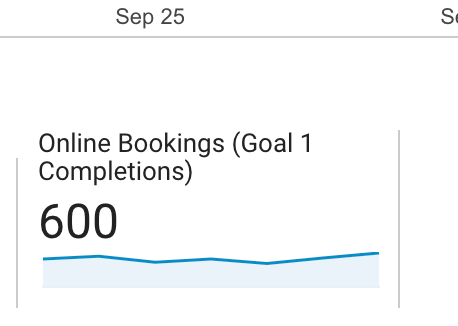
A micro conversion is increasing the number of users who click the “add to basket” button, visit your “price page” or sign up for your newsletter.
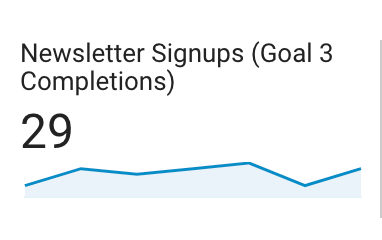
As you may be aware, just because someone has put something in their basket or looked at your price page does not imply they will buy your products.
Therefore, when starting A/B tests on your landing pages, do not run only tests that will increase your micro conversions. Focus on increasing the macro conversions such as increasing the total number of leads, instead of sending people to view your pricing page.
Try reducing the number of steps or conversion points, and you’ll see more sales and leads coming through.
One company doing this very well is Future Fit Training. They only have 1 conversion point (download the pricing guide) and more than 40 courses available on their website.
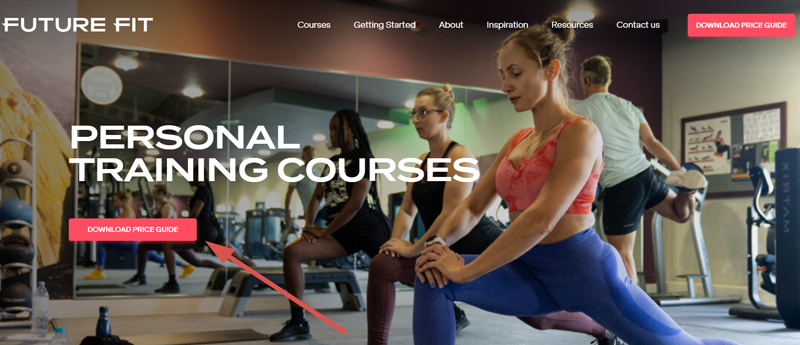
One of the benefits of having 1 macro conversion point is that you can funnel all of the traffic to that conversion point, which makes it very easy to AB test. In fact, you only have to AB test 1 form to have a big impact on your business overall.
Focussing on macro conversions is important for SEO teams too. SEOs are responsible for impacting the bottom line and improving macro conversions is definitely a great way to show that organic traffic is contributing to the overall company’s growth.
Improve page loading times
Page loading time is a ranking factor according to Google, and also an obvious positive element for CRO professionals. If a page loads too slowly, the user can leave and this creates a bounce.
Bounce rate or, worse, reduced dwell time, can be disastrous from an SEO perspective as well. If people come from Google, land on your page, and then hit the “back” button on their browser to go back to Google, this is a strong negative signal that your page didn’t provide a proper answer and didn’t satisfy the searchers’ need.
This can be due to several factors, one of which is page loading time.
Research shows that if you load your page in less than 2 seconds, your bounce rate will be just 9.6%.
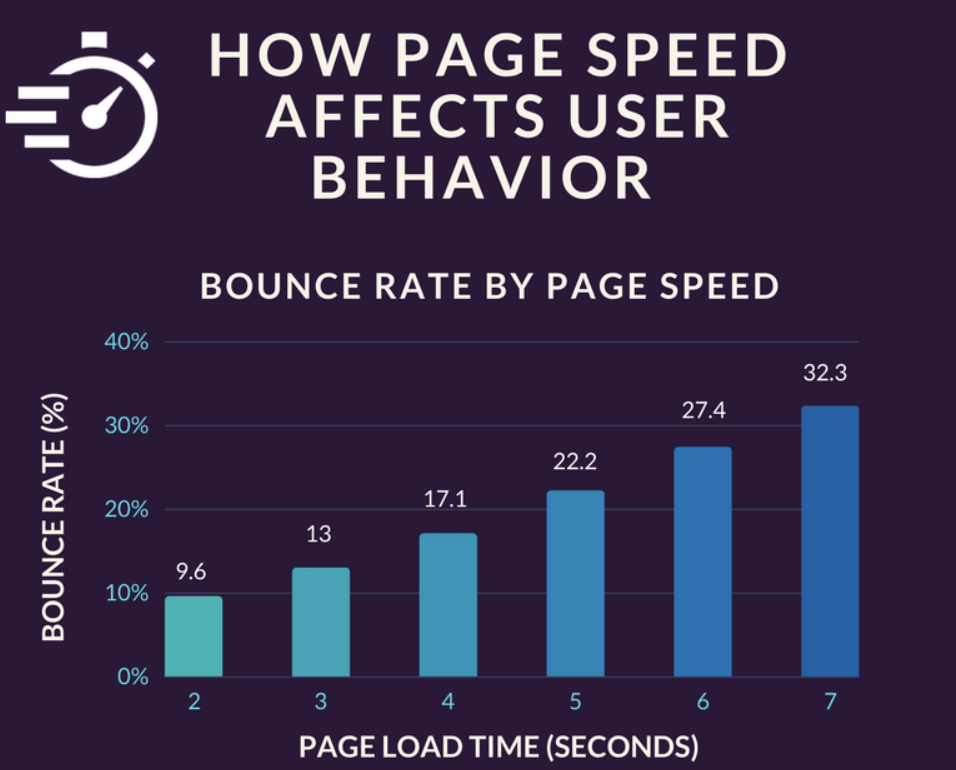
If your page loads in 3 seconds, the bounce rate will be 13% and in 4 seconds it’ll be 17.1%.
So our recommendation is to keep your page loading speed at 2 seconds or lower.
Also, a low bounce rate indicates that people will probably visit more pages of your website and this means conversions will likely increase as a result.
With the new Google page experience update in June 2021, SEOs have a new set of Core Web Vital metrics to work on. In addition to that check out these 39 page load optimization tips to reduce your loading time.
CRO and SEO can and should work together for boosting your revenue
Generating traffic that converts is not easy, and working with UX designers, developers, and conversion rate experts should make things easier.
After all, the company has one financial goal, and working together as one team increases the chances of being successful.
Smaller businesses with smaller budgets and teams can find it hard to work on so many projects all at once. Therefore we recommend a couple of options:
- Focus on strategies that have the biggest impact. Especially, using the macro conversion point we discussed previously makes it easier to run AB tests on 1 single page and achieve a huge impact on your business.
- Hiring a specialist SEO and CRO freelancer. When businesses don’t have a clear picture of what is needed, I would recommend asking for a complete SEO and CRO audit in order to identify frictions and have a plan to resolve them.
So go ahead and make sure those strategies are applied and you’ll see SEO from a different perspective.
PS: Get blog updates straight to your inbox!